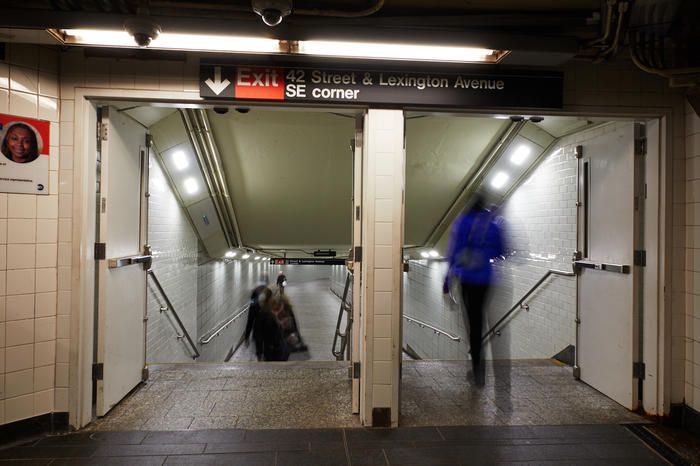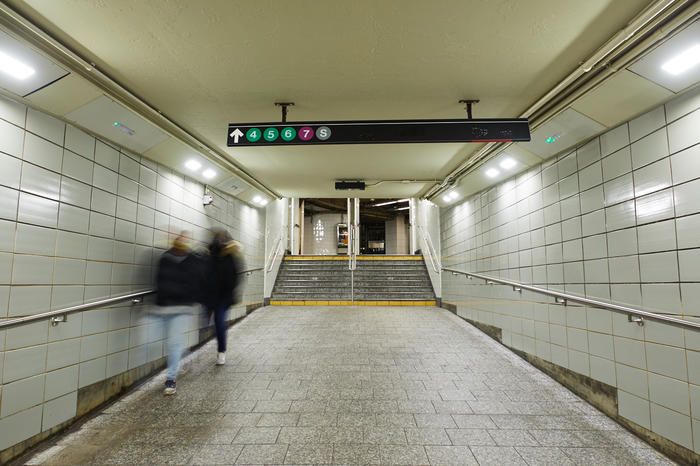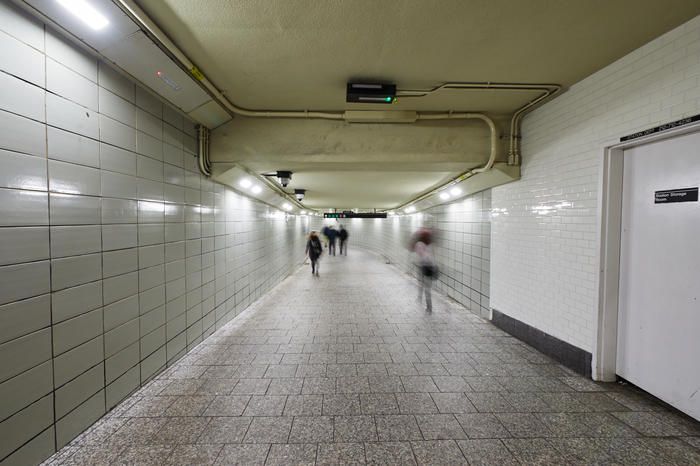Koryo Books: Where K-Pop Fans and Book Lovers Converge in NYC
Established over 40 years ago, this Koreatown store has evolved from a community bookshop into a global cultural destination!


We love to discover secret tunnels and hidden passageways here at Untapped New York, so we were excited to hear of the re-opening of a long-shuttered tunnel connecting Grand Central Terminal to the Socony-Mobil Building at 150 E. 42nd Street. The re-opening and renovation of this subterranean pedestrian pathway is part of a $220 million transit improvement project completed in conjunction with the construction of the new skyscraper, One Vanderbilt. Designed by Stantec and funded by SL Green, all components of the massive transit project are now finished and open to the public.

Photograph Courtesy of Stantec
The newly re-opened tunnel was constructed at the same time as the Socony-Mobil Building from which it originates. Now a New York City Landmark, 150 E. 42nd Street was built between 1954 and 1956. The tunnel was completed in 1955 and appears to have closed in 1991. A New York Times article from the time describes the tunnel’s 215-foot route. Starting “twenty feet inside the new skyscraper,” the tunnel “bends northwest from the southeast corner of Lexington and 42nd Street to a point a little south of center in Forty Second.” It then continued west for 120 feet where it met the Chanin Building passageway then bent toward the Commodore Hotel, now the Grand Hyatt. The tunnel was built to allow workers from the Socony-Mobil Building to avoid crossing the busy thoroughfares of Lexington Avenue and 42nd Street at street level.

Photograph Courtesy of Stantec
Construction of this passageway was no easy feat. As described in the New York Times, work was complicated by the busy streets above and the mess of utilities underground. A water main that stretched directly across the tunnel’s path had to be looped over the passageway’s roof. Workers also had to carefully avoid telephone wires, mail tubes, gas mains, and power cables.
Tunnels have snaked through the streets surrounding Grand Central Terminal since the early 20th century when Terminal City was being constructed. Terminal City was a network of hotels and office buildings centered around the transit hub. Many of the buildings, such as the Roosevelt Hotel, the Biltmore Hotel, and more, had their own underground passageways that led directly into the terminal.

Photograph Courtesy of Stantec
The reopening of this historic passageway comes with the addition of two street-level subway entrances and a new entrance to the 42 Street subway station< on the southeast corner of 42nd Street and Lexington Avenue. Stantec told Untapped New York that the re-opening has created 3,815-square-feet of added circulation space for commuters underground. This new space is greatly appreciated during a time when social distancing is of the utmost importance. The new space will help ease congestion when peak transit crowds return. Additional improvements to the transit hub include enhanced finishes, additional turnstiles and gates, new stairways, escalators, and an ADA-accessible elevator.
Other noteworthy pieces of One Vanderbilt’s transit-oriented project are a 14,000 square foot pedestrian plaza on Vanderbilt Avenue between Grand Central and One Vanderbilt and a 4,000 square foot public transit hall inside the tower, now the second tallest office tower in New York City. Work will continue on increasing transit accessibility in the area into 2022 when the East Side Access project is expected to be complete. That project will extend the Long Island Rail Road (LIRR) from Queens to Grand Central.
Want to discover more of Grand Central’s hidden passageways and secrets? Join us for an upcoming Secrets of Grand Central Walking tour!
Next, check out The Hotel Roosevelt’s Secret Passageway to Grand Central and See a Remnant of the Lost Biltmore Hotel in Grand Central Terminal
Subscribe to our newsletter